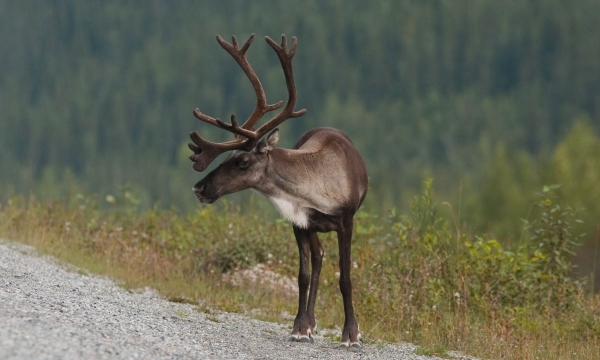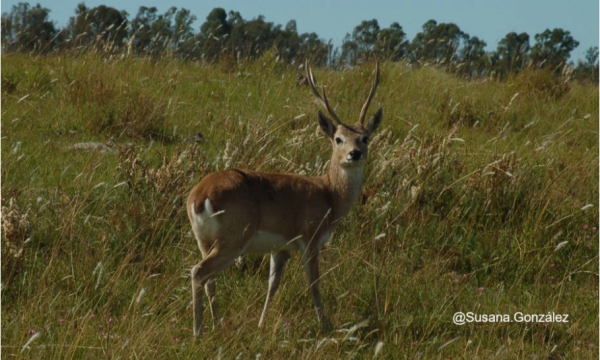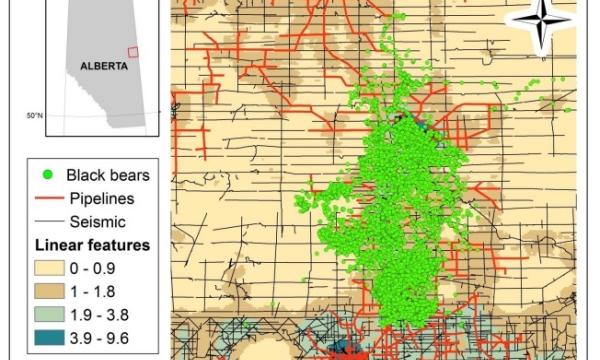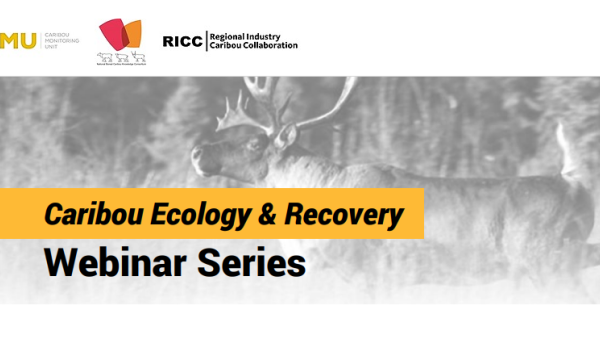Boreal Caribou Search Results
Boreal Caribou Search Results
Displaying:
2381 - 2400 of 2657
To narrow down your search results use the filters at left to find Contacts, active Projects, specific resource Formats, News & Events or, for example view only resources from a specific Organization, or about specific Disturbance Types.
Unravelling the Impacts of Disturbance Type and Regeneration on Movement of Threatened Species
Resource
Impact of disturbance on the daily movement of two large threatened mammals, and examined the nuances of movement response to type and regeneration of disturbance across seasons.
Untangling Effects of Human Disturbance and Natural Factors on Mortality Risk of Migratory Caribou
Resource
Abstract Human disturbances are rapidly increasing in northern and Arctic regions, raising concerns about the recovery and persistence of declining caribou ( Rangifer tarandus) populations. Yet, the...
Update on the Global Status of Wild Reindeer and Caribou
Resource
This online article gives a relatively brief overview of the status of wild caribou and reindeer around the circumpolar world.
Update on the Global Status of Wild Reindeer and Caribou
Resource
Rangifer tarandus (wild reindeer or caribou) is an abundant and widely distributed member of the deer family across the circum-arctic tundra and boreal forests. Rangifer through its sheer numbers has...
Use of Anthropogenic Linear Features by Alternative Predators in Woodland Caribou Range
Resource
In this study, we examined seasonal coyote and black bear use of industrial linear features and rivers and streams (i.e. natural linear features). We used two methods to assess movement behavior...
Use of Island and Mainland Shorelines by Woodland Caribou during the Nursery Period in Two Northern Ontario Parks
Resource
Predation is considered a primary limiting factor of woodland caribou ( Rangifer tarandus caribou) populations across North America. Caribou are especially vulnerable to predation during their first...
Use of Linear Features by Mammal Predators and Prey in Managed Boreal Forests
Resource
In managed boreal forests, logging operations maintain high levels of anthropogenic disturbance in the ecosystem. The establishment of permanent anthropogenic linear features such as logging roads in...
Use of Space by Caribou in Northern Canada
Resource
Understanding how populations are structured and how they use natural and anthropogenic spaces is essential for effective wildlife management. A total of 510 barren-ground ( Rangifer tarandus...
Using Camera Collars to Study Survival of Migratory Caribou Calves
Resource
This resource is available on an external database and may require a paid subscription to access it. It is included on the CCLM to support our goal of capturing and sharing the breadth of all...
Using camera traps to estimate density and population composition of deer, moose, and elk
Project
Organization:
Aerial surveys are the primary method to assess ungulate population size, demographics, and trends in Alberta. These estimates are used to set hunting license allocations and determine priority areas...
Using causal analysis to advance caribou recovery research and policy
Event
Organization
In this bi-weekly webinar series, audience members from across Canada and diverse organizations join us to explore the latest research and Indigenous ways of knowing regarding caribou ecology and...







